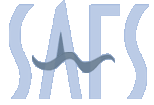UW Aquatic & Fishery Sciences Quantitative Seminar
Trevor Branch
School of Aquatic and Fishery Sciences, University of Washington
What are the most highly cited fisheries references, and why?
Abstract
In this talk, I will demonstrate some tips and tricks to get the most out of the ISI Web of Science and Google Scholar, and show how I used these methods to identify the most cited 199 fish and fisheries papers, books, databases and reports. The chief characteristic of these papers was thoroughness, including comprehensive reference lists, and lots of figures, tables, and photographs. The single-most cited reference was Nelson's Fishes of the World by raw citation count. However, when adjustment is made for citation inflation over time, the top references were Jordan & Evermann (1898), Beverton & Holt (1957), and Ricker (1975). A novel method for assigning individual author contributions to each reference is developed, and used to show that Bill Ricker and JR Brett (both of the Nanaimo Pacific Biological Laboratory, DFO) contributed the most to the highly cited list. Gender representation is almost entirely male in earlier years but women have been steadily increasing their representation on the list over time, with Susan Jobling, Julia Baum, Heike Lotze and Fiore Micheli contributing 3 or more references to the list in recent decades. The top journals contributing items were Science, Nature, and the Canadian Journal of Fisheries and Aquatic Sciences; while the top countries were the US, Canada, and the UK. A striking pattern in the list is the increase over time in the number of authors per reference. Before 1999, no reference had more than 6 authors, but after 2000, 30 of 113 references had 6 or more authors. A strong correlation is found between internet and email usage and the number of authors per paper, although NCEAS working groups may also play a role. The full list of highly cited references can be viewed at: https://sites.google.com/a/uw.edu/most-cited-fisheries/home

